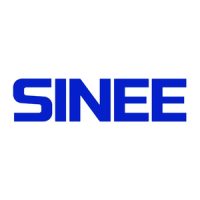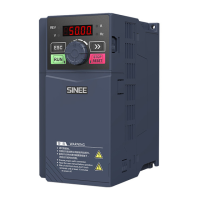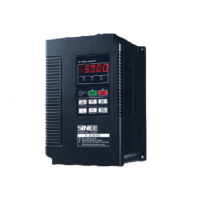
Do you have a question about the Sinee A90-4T032B and is the answer not in the manual?
Describes essential safety measures before installing the inverter.
Details safety measures to follow during the installation process.
Outlines critical safety guidelines for electrical wiring.
Lists safety checks required before powering the inverter.
Highlights safety procedures to follow after the inverter is powered on.
Safety considerations for operating the inverter.
Safety guidelines for performing maintenance on the inverter.
Details the various models and their technical specifications.
Explains the different operational states and modes of the inverter.
Describes how the inverter can be operated (keyboard, terminal, communication).
Guides users on verifying the product upon receipt.
Provides physical dimensions and installation layout information.
Specifies environmental and site conditions for proper installation.
Illustrates how to connect external devices to the inverter.
Details the connections for the main power circuit terminals.
Explains the connections for the control circuit terminals.
Information on extending the keyboard connection.
Steps for verifying wiring connections after installation.
Describes the purpose and operation of the inverter's keyboard.
Explains the different display modes and navigation through the menu.
Outlines the step-by-step procedure for commissioning the inverter.
Lists essential checks before supplying power to the inverter.
Details methods for starting and stopping the inverter.
Lists frequently used parameters for inverter configuration.
Explains the process of automatically identifying motor parameters for optimal control.
Explains the structure and organization of function codes.
Provides a comprehensive list of all functional parameters.
Details parameters related to basic inverter functions.
Lists parameters for configuring motor 1.
Describes how input terminals can be configured.
Details the configuration of output terminals.
Covers parameters for controlling the start and stop functions.
Explains parameters specific to V/F control.
Details parameters for vector control mode.
Covers all fault and protection parameters.
Describes parameters for multi-segment speed and PLC functions.
Explains parameters for PID control functionality.
Details parameters for Modbus communication.
Information on customizing parameters for user selection.
Describes keyboard and display related settings.
Covers parameters for torque control.
Lists parameters for a second motor.
Details auxiliary functions and their parameters.
Explains parameters for virtual I/O functions.
Lists parameters for monitoring inverter status.
Details how to view fault records.
Explains the process of identifying motor parameters.
Lists important precautions to take before the self-identification process.
Provides a step-by-step guide for performing motor parameter self-identification.
Lists common fault codes, causes, and solutions for the inverter.
Provides guidance on analyzing and troubleshooting common operational failures.
Outlines routine checks and cleaning procedures for the inverter.
Information regarding the inverter's warranty services and conditions.
Details the selection and calculation for braking resistors.
Information on available braking unit models.
Guidelines for selecting appropriate connecting wires.
Specifies the series and networks supported by the Modbus protocol.
Describes the communication interface and default settings.
Explains the structure of Modbus RTU messages.
Details the definitions and usage of various Modbus function codes.
Provides a mapping of function codes to Modbus register addresses.
Explains the data length for different RTU frames.
Details the Cyclic Redundancy Check calculation for data integrity.
Explains timing intervals and data frame processing.
Provides practical examples of Modbus communication.












